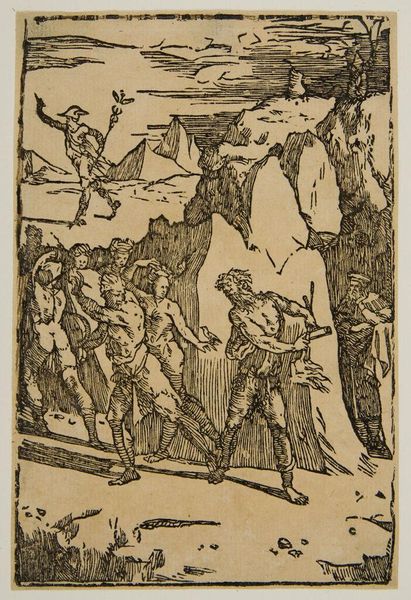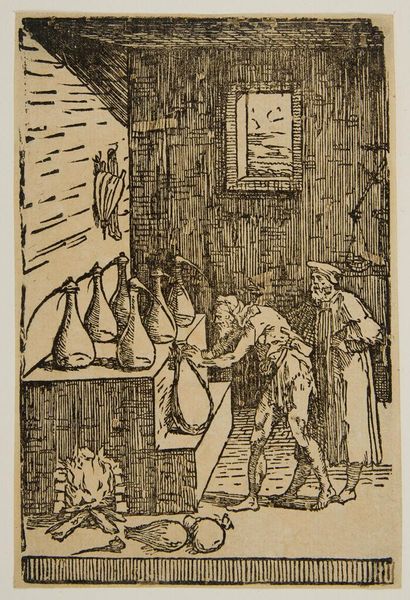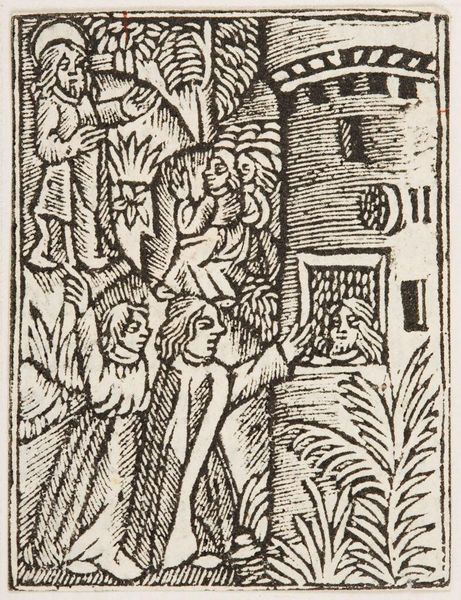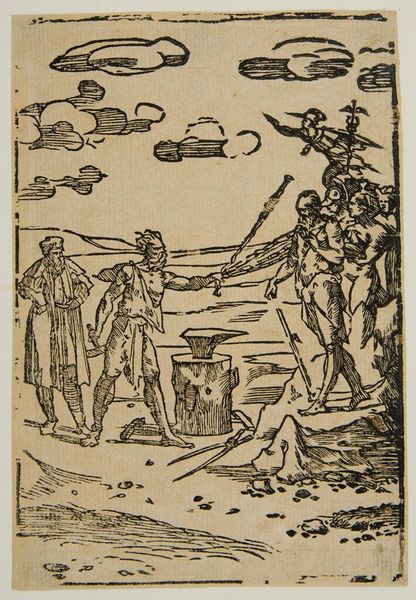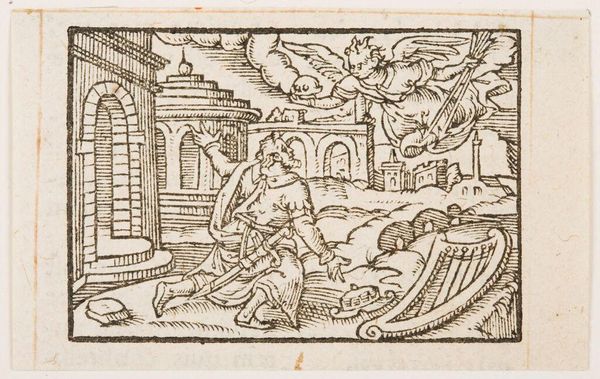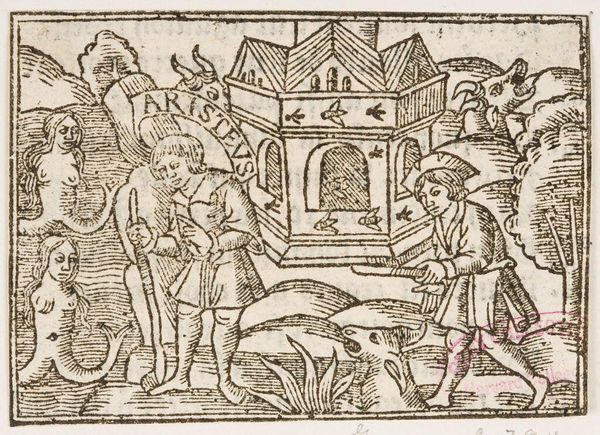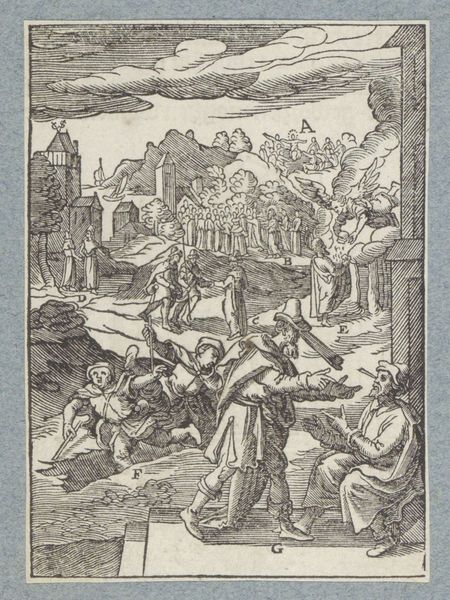
Vulcan and the Philosopher (Theory) Work in the Smithy while the Metals Remain Concealed in the Rocks c. 1530 - 1535
0:00
0:00
Copyright: CC0 1.0
Curator: Domenico Beccafumi’s print, "Vulcan and the Philosopher (Theory) Work in the Smithy while the Metals Remain Concealed in the Rocks," presents a fascinating juxtaposition of labor and intellect. The scene has such a mysterious feel. Editor: It's rough, almost crude, in its execution. Look at the heavy lines, the density of marks creating form. You can almost feel the heat of the forge and the grit under Vulcan’s feet. Curator: The print draws heavily on Renaissance Neoplatonism. It depicts Vulcan, the god of the forge, working alongside a philosopher, representing the idea that true knowledge comes from both practical work and theoretical understanding. It speaks to the role of alchemy in Renaissance intellectual life. Editor: Alchemy wasn't just about turning lead into gold. It was about transforming materials through labor. Notice the covered materials, the raw potential hidden in the rocks, and the philosopher's hand mirroring Vulcan's gestures. There is a clear connection between process and knowledge here. Curator: Absolutely. Beccafumi's allegory highlights the humanist belief that both divine inspiration and human effort are necessary to reveal hidden truths. The print was likely intended for an educated, elite audience familiar with these concepts. Editor: I’m most drawn to the texture, the way the ink sits on the paper. It makes me think about the labor involved in producing these images and the wider system of production needed to disseminate them. Curator: It certainly adds a layer to the interpretation of this complex work. Editor: Indeed, it's far from simple.
Comments
No comments
Be the first to comment and join the conversation on the ultimate creative platform.
